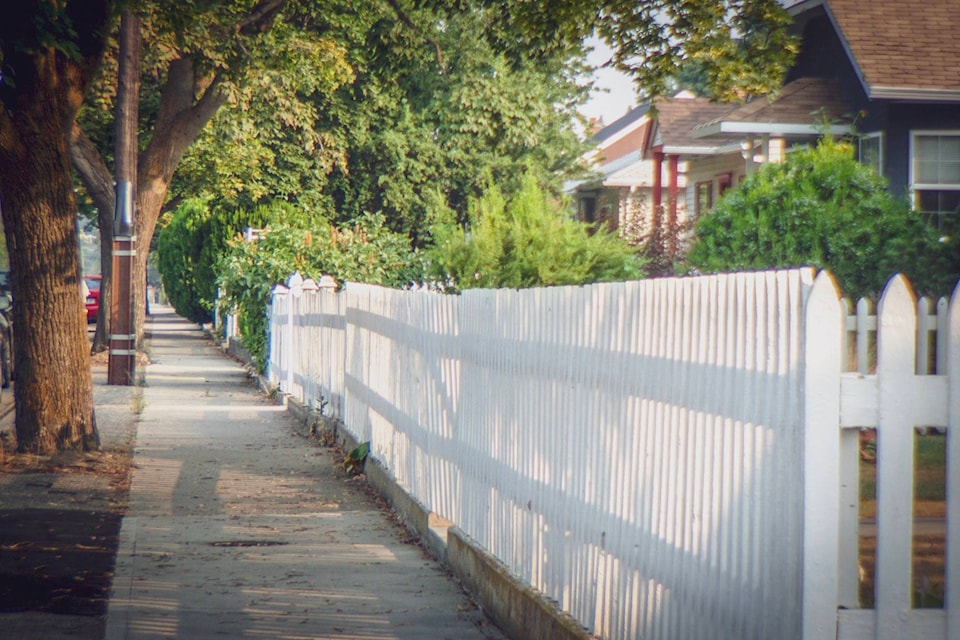Two of Penticton’s more defined neighbourhoods are being considered for heritage designation.
The City of Penticton is hosting information sessions for residents of Windsor Avenue and the K Streets neighbourhoods to explore the idea of designating them as heritage conservation areas under the new Official Community Plan.
Related: ExpOCP kicks off with a packed house
With this designation, extensive renovations and new homes in these areas would need to follow a set of design guidelines that respect and promote the heritage qualities of these neighbourhoods.
Historian Randy Manuel said the K streets neighbourhood got its start after the Second World War when Dominion Wartime Housing made a deal with the City of Penticton, which supplied enough property to be able to build 100 houses.
“The city had to give them the land for one dollar, and so they were to be able to get the project off and running,” said Manuel, adding the first houses were built on Maple and Bassett streets.
“So they get 20 houses in there and then, probably by the middle of 1946 to the end of 1946, they concluded the other 80 houses on King, Killarney, Kensington, Kilwinning and Queen Streets.”
The houses were to be rented to returning war veterans, but at the end of 13 years, the city would get the land back.
“What happened is that the soldiers were offered instead to actually buy the properties,” said Manuel, adding that in some cases, people were only paying a $25 a month mortgage into the 1970s. “The houses were all substantial because the heavy timbers came out of Leir sawmill.”
“Preserving the character and heritage of some of our more unique neighbourhoods was a common theme in our engagement activities,” said special projects manager Ben Johnson. “Under the Local Government Act, municipalities can create heritage conservation areas to protect the special historical significance of some neighbourhoods and ensure that homeowners can still undertake renovations and upgrades.”
Homes in these neighbourhoods were identified as having historical significance because of the architecture of the post-war housing and the deep lots and tree-lined streets that characterize these neighbourhoods. Heritage design guidelines would regulate architectural characteristics, building materials, landscaping, and height and roof forms of proposed developments. Homeowners would need to apply for a heritage alteration permit to have their proposed developments reviewed according to the guidelines before work can proceed.
Manuel describes Windsor Avenue, with the road and houses looping around a grassy centre oval as drawing a higher social class, filling up with professionals like lawyers and doctors, as well as military officers.
“The original Ellis ranch building was in the southwest corner of the oval,” said Manuel, adding that development started on the area just before the Second World War broke out. Back then, it was called the Cherry Lands subdivision.
“Where all the houses on the southern side of the oval are was where the general store, post office, blacksmith shop and just general farm buildings, houses, etc., were located,” said Manuel. “They would all go out and play football and baseball and games in the oval.
“Families would get together and watch the kids. There was lots of interaction compared to neighbourhoods today where the garage faces the main street and you don’t know who your neighbour is.”
The developer insisted on a better quality architectural style, and each property would only be allowed one outbuilding.
“In those days nobody had attached garages. They had a garage in the backyard emptying on to the lane and those garages had to be better quality and match the architecture of the house,” said Manuel. “Now you’ve got a neighbourhood of distinctive houses that are a step above both in looks and social class.”
The proposed heritage conservation area is one of six sets of design guidelines identified and drafted through the OCP process, along with hillside development, intensive residential, multi-family residential, commercial and mixed-use, and downtown high streets and transitional areas.
“The city is hosting a targeted consultation with the homeowners in the proposed heritage conservation areas because of the unique impact to residents,” says JoAnne Kleb, engagement strategist. “The engagement activities will help the city understand if there is interest in creating these designations and what they should consider.”
Two information sessions will be held on Jan. 31 in the Penticton Library auditorium from 3 to 4 p.m. or from 6 to 7 p.m., where attendees will hear a presentation from staff and have the opportunity to ask questions and complete a feedback form. Residents also have the option of participating in a webinar on Feb. 4 from noon to 1 p.m. or 6 to 7 p.m.
Email getconnected@penticton.ca to register for a webinar. Feedback forms will also be available at shapeyourcitypenticton.ca and at the library and city hall Jan. 31 through to Feb. 15 to formally gather feedback from residents.
The consultation on the proposed heritage conservation areas is one of the last steps before the city releases a draft of the Official Community Plan, expected this spring. More information about the heritage conservation areas and the Official Community Plan is available at shapeyourcitypenticton.ca.
